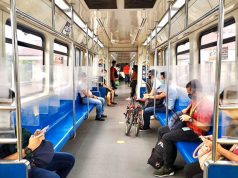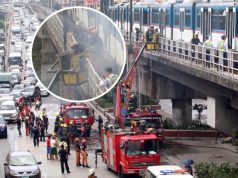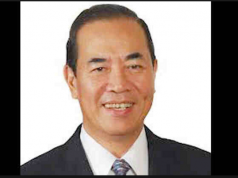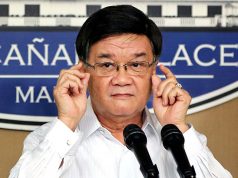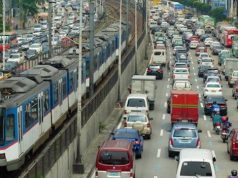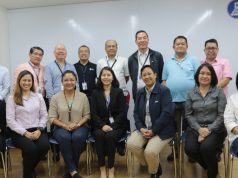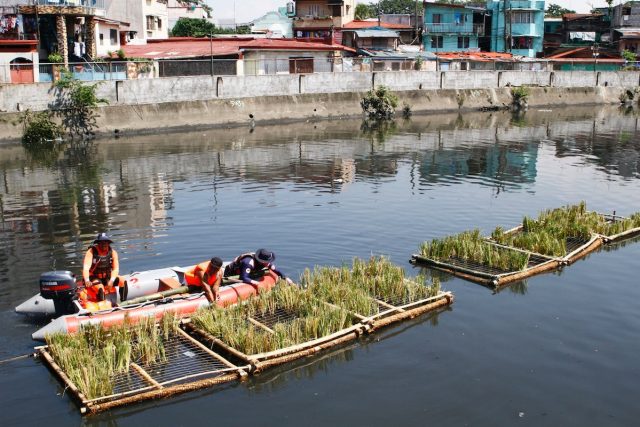
MANILA – We own this river – it is an indispensable part of our lives, and we must be responsible stewards for it.
With this message to various stakeholders, the operator of LRT-1 undertook for the second year on Saturday a massive make-or-break cleanup for rivers, with focus on the environmentally challenged Tripa de Gallina in Pasay City.
The intervention by the Light Rail Manila Corporation (LRMC) brings together key goals: cleaning the river massively and quickly before it dies, getting more people to serve as stewards, and providing livelihood opportunities along the way – specifically by teaching them how to plant vetivers and make bokashi balls, both vital interventions for river rehabilitation. The private business buys the vetivers and Bokashi balls from the Pasay residents, who then have a bigger sense of ownership of the river.
Former DPWH Secretary Rogelio Singson, now Light Rail Manila Corporation (LRMC) CEO and President, said propagateing the environment- friendly technologies of Vetiver and Bokashi balls, as well as coco kneading for slope protection, are the more meaningful measures private business can take to address climate change.
“Personally I’m always an advocate of doing something for the environment and to address climate change,” said the LRMC chief, who was also celebrating his birthday on Sept. 16.

“We have always advocated an environment-friendly mass transport mode. Siguro naman may obligation din kami ayusin yung mga dinadaanan naming mga daluyan ng tubig [It’s only right that we fulfill our obligation top clean up the waterways around us]. We are really committed to cleaning up the esteros where our rails pass, kasama na yung [including the] Pasig river.”
For this year’s river clean-up, the LRMC engaged the communities within the Pasay area where the LRT-1 depot is located.

They pooled the members of Barangays 188, 189 and 190; volunteers from Pasay City together with those from the MMDA, DPWH, DOH and LGU; students from CUP (City University of Pasay), Asian Institue of Management and other volunteers within the Pasay City area who have a sense of river ownership.
Dr. Lovernie “Duday” de Sales, Environmental and Social System manager of LRMC, elaborated on the company’s outreach: “This is part of the corporate social responsibility (CSR) of the company, It was formed last year because we saw that Estero de Tripa de Gallina badly needed intervention. Since I am in environment and social [engagement], we took this opportunity to engage the barangays and communities where we operate — and even in some places where we don’t operate. It’s all part of the Live for the Rivers coalition.”
She said saving rivers and watersheds is a crucial effort, “and that’s why we have mangrove planting, tree planting activities. We held a symposium because educational campaigns, change of behavior, are also needed. So those are the ones we focus on.”

“For the past two years, the firm had sought to empower the barangays,” she said, an effort starting to bear fruit as more residents care for the estero. She said they needed to do more educational campaigns among the communities upstream, because no matter how much the ones in downstream areas clean up, if those upstream keep throwing trash, the task will never end.
What makes LRMC different from the others is its thrust of empowering the communities through a sustainable approach. They are using Vetiver and Bokashi balls, available through a livelihood program supported by the company.
Vetiver is a plant found to be every effective against pollutants. “Since we’re aiming for sustainability, we need the vetiver. But it’s not that easy to source vetiver so we must teach the communities how to plant it,” Dra. De Sales continued.
“Ganoon din po yung Bokashi. Ang tawag po namin dito ay “mabuhay balls” para may local na dating. Yung Bokashi naman po, marami na pong gumagawa nito. So, para ma-integrate yung tanim at microorganism, nilagay namin siya sa estero.”
The company buys back from the communities the Bokashi balls at P15 per. Not only will it rehabilitate the estero, it will also improve the lives of the people within the community, de Sales explained.

Within five years and less than 200,000 Bokashi balls, and with all the amount of microbes put into the estero, the river will be kept alive: the company will make sure of that, she stressed. “Patience lang ang kailangan dito [We just need patience for this].”
The MVP Group, of which TV5 is part, has a stake in the LRMC, a joint venture of Metro Pacific Light Rail Corporation (MPLRC), Ayala Corporation’s AC Infrastructure Holdings Corporation (AC Infra) and the Philippine Investment Alliance for Infrastructure’s Macquarie Infrastructure Holdings (Philippines) PTE Ltd. (MIHPL).




